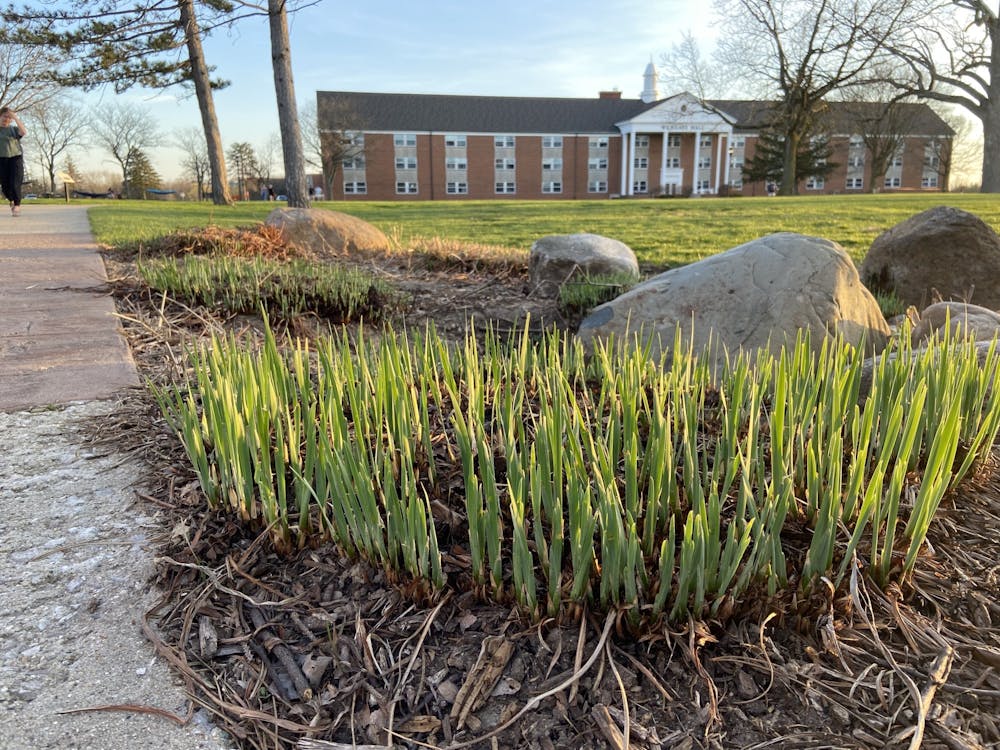Every year after spring break, Taylor’s campus looks a little different. Some might notice the lingering smell, or others might see the physical change — but every spring, workers from the grounds team burn the prairie grasses around Taylor.
The prairie burns are focused around locations like the stream bed and rain gardens in front of Euler.
Grounds Superintendent Kerry Shanebrook said that the burning is done to actually help plant growth.
“So it gets rid of the weeds and gets rid of a lot of the insects that damage, like pill bugs and stuff like that that will really hurt your lawn,” Shanebrook said.
He explained that the native grasses have deep roots and will keep growing back, but burning them takes away some of the cover for small mammals and keeps their population from getting out of control.
The burning has only been going on for about eight years. Shanebrook had been working at Taylor for a while, and they just let the areas grow — but when he explained the benefits of burning, the university was willing to go along with the plan. Shanebrook said it has really helped the appearance of the area.
The burning mostly helps the campus, but there are a few things that the grounds crew has to look out for. There are some burn areas that are close to parking lots, so grounds will burn a little bit right beside the cars first to create a fire break that won’t be jumped if the wind is pushing the fire hard while the larger sections are burning.
Smoke is also an issue, which is why they burn the land while Taylor students are on spring break.
There is another field that is burned across the street from Taylor by the Avis building. Some Taylor professors have had test plots in that field to study, but the burn is actually done by Avis, not Taylor Grounds.
Shanebrook wishes Avis would regularly notify Taylor when they do the burn so that students could watch the fire.
“When that's burning, flames are like 20 feet high and it sweeps through that whole field," Shanebrook said. "In probably 10 minutes the whole field is consumed.”





